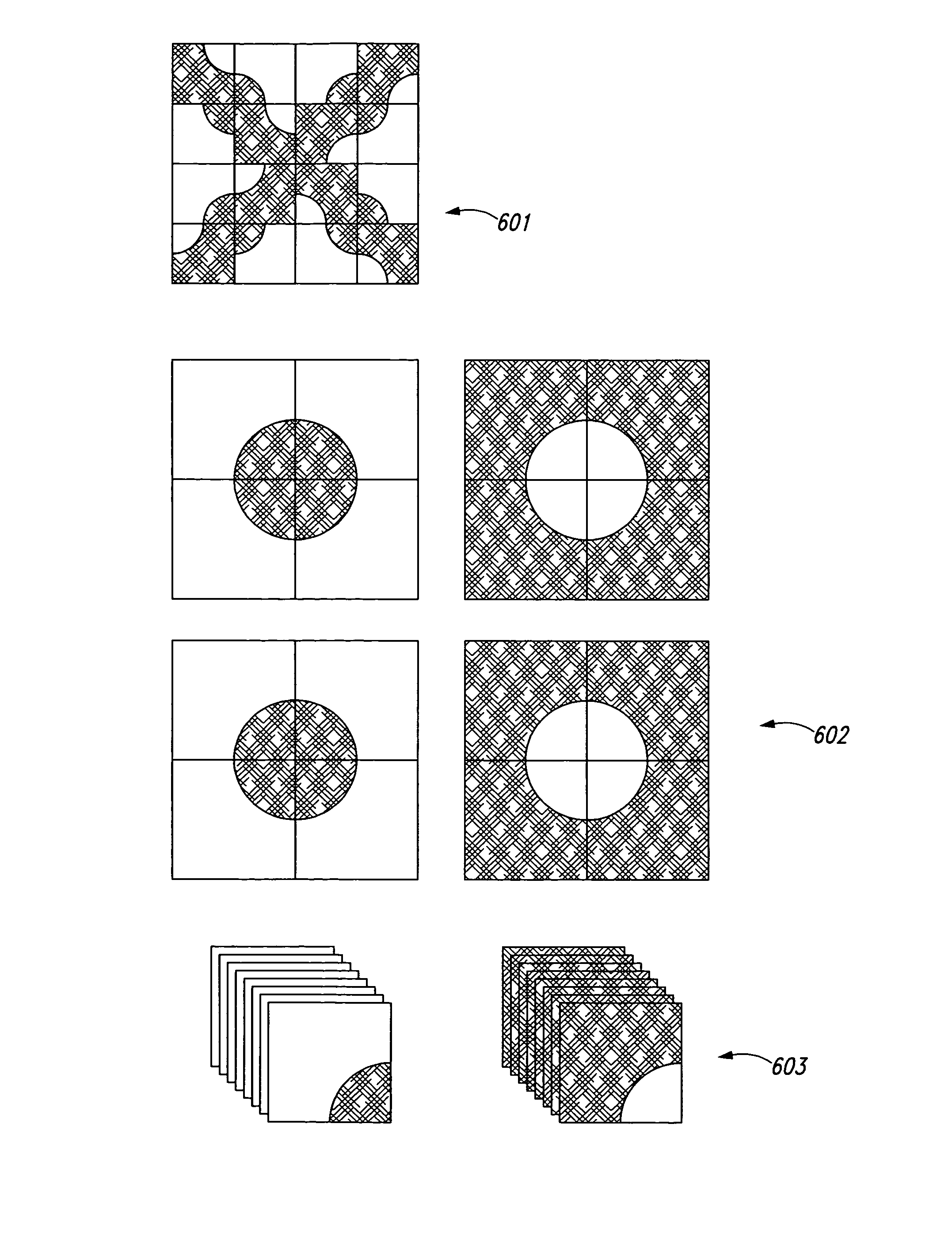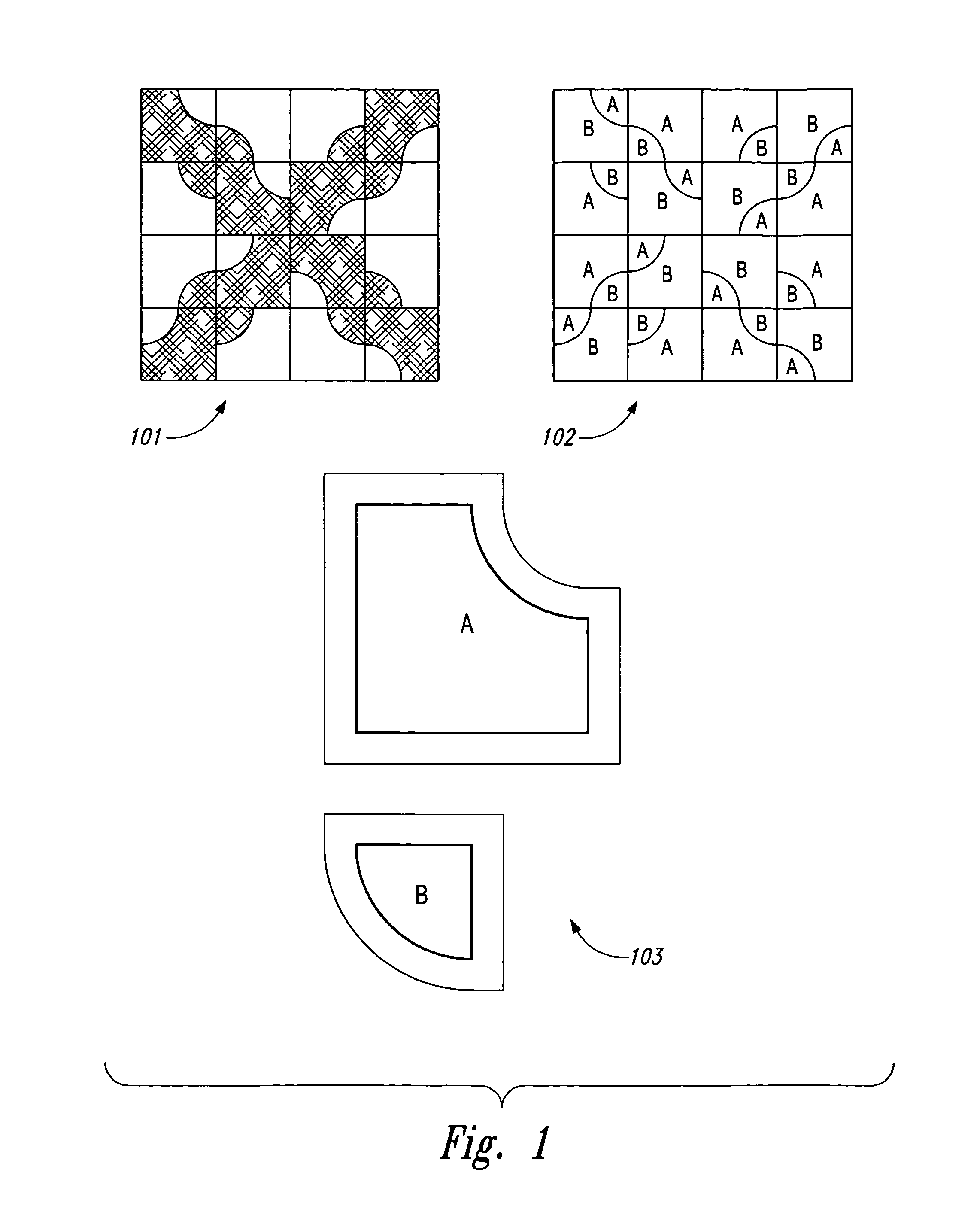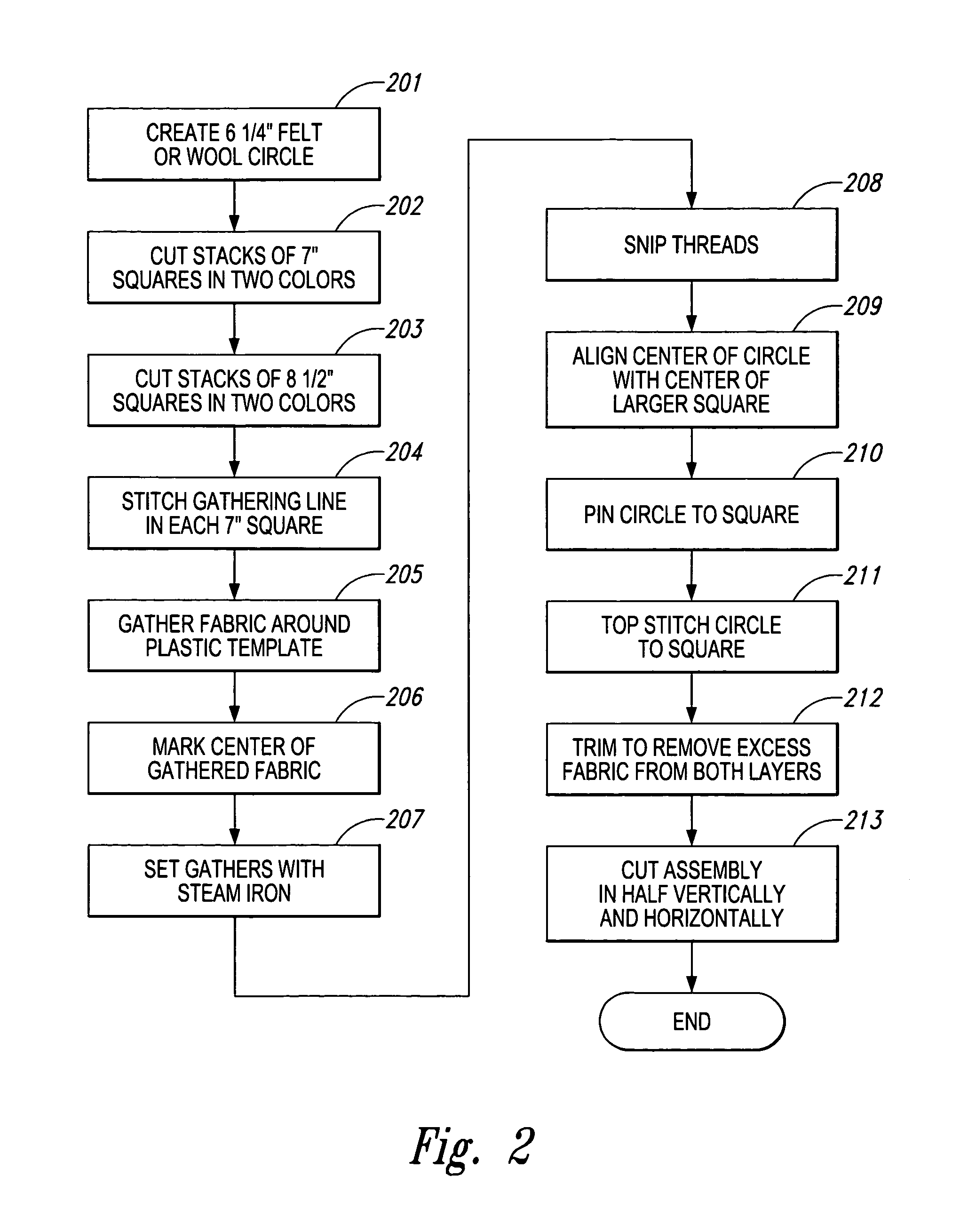Method for joining fabric
a technology of joining fabric and fabric seams, applied in the field of sewing and quilting, can solve the problems of reducing the geometric precision of the overall quilt assembly, the need to mark and cut all pieces individually, and the fabric to bunch and fold in an unseemly fashion. it can reduce the number of sewing and cutting operations, and enhance the aesthetic appeal of the quilt
- Summary
- Abstract
- Description
- Claims
- Application Information
AI Technical Summary
Benefits of technology
Problems solved by technology
Method used
Image
Examples
Embodiment Construction
[0047]An example of the prior art is shown in FIG. 1, which shows the pattern units required to create quilt blocks for a design which requires curved seams known as a “Drunkard's Path” quilt. Referring to FIG. 1, there is shown a finished traditional Drunkard's Path quilt block 101. Construction of a single block requires thirty-two curved pieces of fabric, sixteen each of two different colors and shapes as shown in 102. Four steps are required to fabricate these curved pieces of fabric: (1) tracing of two templates for each curved segment required as shown in FIG. 103; (2) cutting two pieces of fabric for each curved segment required; (3) physically easing the two pieces of fabric to enable a fit; and (4) stitching the curved seam. This four-step process is repeated for every curved pattern unit required for every quilt block used to compose the final quilt.
[0048]A typical small quilt would be constructed of 30 quilt blocks (an array of 5×6). To construct this quilt entirely of Dr...
PUM
 Login to View More
Login to View More Abstract
Description
Claims
Application Information
 Login to View More
Login to View More - R&D
- Intellectual Property
- Life Sciences
- Materials
- Tech Scout
- Unparalleled Data Quality
- Higher Quality Content
- 60% Fewer Hallucinations
Browse by: Latest US Patents, China's latest patents, Technical Efficacy Thesaurus, Application Domain, Technology Topic, Popular Technical Reports.
© 2025 PatSnap. All rights reserved.Legal|Privacy policy|Modern Slavery Act Transparency Statement|Sitemap|About US| Contact US: help@patsnap.com



